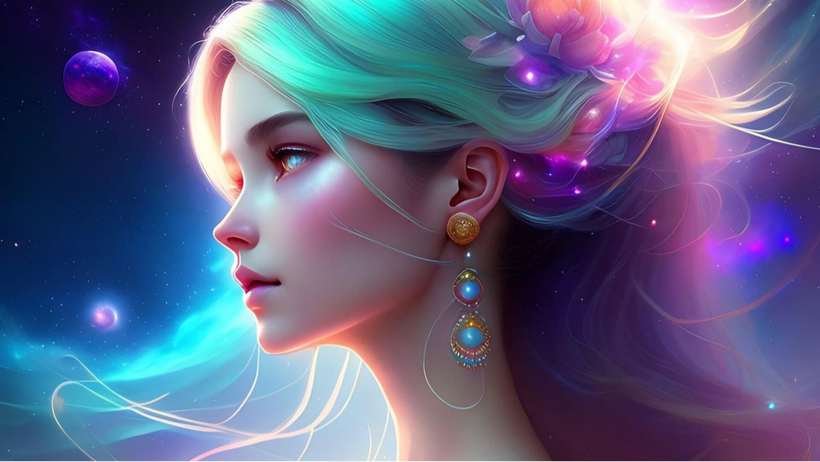The rise of artificial intelligence (AI) has dramatically changed many creative fields. Among them, 3D art is one of the most affected. This post explores the impact of AI on 3D art and discusses whether it is an innovation that pushes the boundaries or a dilemma that challenges traditional artists.

What is the Impact of AI on 3D Art?
The impact of AI on 3D art is huge and cannot be ignored. First, AI technologies help artists create faster. For example, AI-powered tools can generate realistic textures or models within minutes, saving artists many hours. Moreover, AI assists in automating repetitive tasks, such as rigging and animation, which often take up most of an artist’s time.
Besides saving time, AI also helps improve creativity. Artists can use AI to experiment with new styles and forms that were once difficult or impossible to create manually. Thus, the combination of human creativity and AI’s computing power opens new horizons for 3D art.
Innovation: How AI Enhances 3D Art Creation
First and foremost, AI introduces a level of innovation in 3D art by providing new ways to create and design. For instance, generative adversarial networks (GANs) can generate 3D models from 2D images, which allows artists to convert sketches into detailed 3D assets. Furthermore, AI algorithms can analyze trends and user preferences, helping artists produce content that fits market demands.
Secondly, AI tools make the 3D creation process more accessible to beginners. Traditionally, mastering 3D modeling software took years of practice. However, with AI-guided tools, even novices can create impressive 3D artwork. For this reason, AI democratizes 3D art and encourages more people to enter the field.
In addition, AI enhances the realism of 3D art. AI-driven rendering engines can simulate lighting, shadows, and textures more accurately than ever. Consequently, the final artwork looks more lifelike and detailed, attracting more viewers and clients.
The Dilemma: Challenges AI Brings to 3D Art
Despite these advantages, the impact of AI on 3D art also presents some dilemmas. One major concern is the fear of losing the human touch. AI can generate artwork automatically, but some critics argue that this takes away the soul and emotion that only human artists can provide. Moreover, AI-generated art sometimes lacks originality because it learns from existing works and may copy styles unintentionally.
Another dilemma is the threat to professional artists’ jobs. Since AI tools can automate many tasks, some fear that fewer artists will be needed in the future. This fear raises ethical questions about the balance between embracing technology and preserving human employment.
Additionally, there are legal and copyright issues. AI often uses large datasets from online sources, some of which may not have proper licenses. This creates uncertainty about who owns the rights to AI-generated 3D art and whether artists should be compensated for their original works used in training AI.
How Artists Can Adapt to the AI Era
To face these challenges, 3D artists need to adapt their skills and mindset. Firstly, artists should see AI as a tool rather than a competitor. By mastering AI tools, artists can improve their workflow and focus on creative decision-making instead of repetitive tasks.
Secondly, artists can combine AI with their unique style. Since AI lacks personal emotion, the artist’s vision remains vital. Artists who use AI creatively will have a competitive edge in producing original and meaningful 3D art.
Thirdly, artists must stay informed about legal rights and ethics concerning AI art. Knowing the rules helps protect their work and avoid legal risks when using AI tools.
Future Trends: What to Expect Next?
The impact of AI on 3D art will continue to grow. In the near future, AI might develop even smarter tools for real-time collaboration and instant feedback. This will allow artists to iterate faster and create better quality art.
Furthermore, AI may also help customize 3D art for different audiences. For example, AI could generate personalized avatars or objects based on user preferences, enhancing user experience in gaming, VR, and marketing.
However, balancing AI innovation with ethical concerns will be crucial. Society, artists, and tech companies must work together to create fair guidelines for AI use in art.
>>> Read more: Sightseeing Stan – Cinematic Interview Lighting From Basic To Advanced
Conclusion
In summary, the impact of AI on 3D art is both an innovation and a dilemma. AI brings remarkable advantages by speeding up workflows, enhancing creativity, and democratizing 3D art creation. At the same time, it raises important questions about originality, employment, and legal issues.
For artists, embracing AI as a helpful tool and staying aware of its limitations and risks is the best way forward. AI will not replace human creativity but rather enhance it if used wisely.
Ultimately, the impact of AI on 3D art depends on how the creative community adapts to this powerful technology and shapes its future.